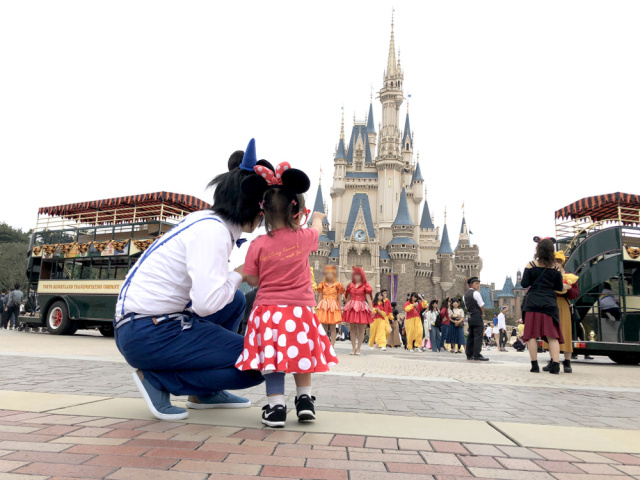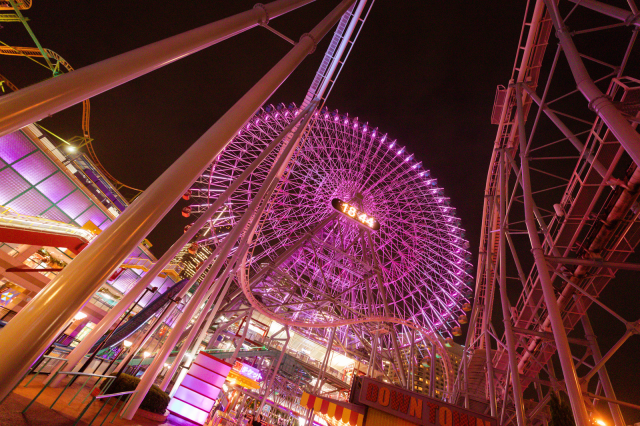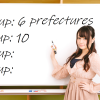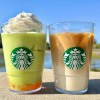
Amusement park association wants quiet thrill rides, no hugs as part of post-coronavirus closure reopenings.
The coronavirus pandemic has been rough on many businesses, but it’s been especially devastating for amusement parks. Tokyo Disneyland and Disney Sea, as well as Osaka’s Universal Studios Japan, have been closed since late February, dropping their attendance-related revenues down to zero even during Japan’s Golden Week Spring vacation period that straddles the end of April and beginning of March.
But with infection numbers decreasing, amusement parks are looking ahead to what sort of precautions they’ll need to put in place in order to reopen. To that end, the East Japan and West Japan Theme Park Associations have prepared a document titled “Guidelines to Prevent the Spread of Infection of the Novel Coronavirus,” which says it has the agreement of Oriental Land Japan and USJ, the companies that manage Tokyo Disneyland/Disney Sea and Universal Studios Japan, respectively.
The document, which was posted by Mie Prefecture’s Nagashima Resort hot spring facility to its website, lays out a number of suggested policies. A lot of them seem like they’d be pretty easy to implement, such as capping admission to parks and individual attractions, or checking guests’ temperatures at park entrances and denying admission to those with fevers, and also asking all guests to wear masks while inside the park. The associations also ask entertainment facilities to encourage the use of cashless payment systems and advance purchase tickets, to shorten the amount of time spent standing in lines and handling cash.
The guidelines then move into discussing how to manage the attractions and rides themselves and things get tricky. Again, some of them, like keeping windows and doors to indoor attractions open for better ventilation, don’t seem like they should be that hard to follow, but then you come to this:
“Roller coasters and other conveyance-style attractions
Have guests wear masks, and urge them to refrain from shouting/screaming.”
▼ Shhh
The cathartic release of tension that comes from yelling your guts out at the most intense part of the ride is sort of the whole point of riding a roller coaster. Shouting and screaming are the exact responses they’re designed to produce, after all. But with the coronavirus being an airborne infection, the associations would rather not have riders’ breath, saliva, and other mouth-sourced particles flying around.
It’s not only thrill rides that the guidelines want guests to remain quiet while enjoying, though. “Refrain from shouting/screaming” also shows up in the sections for indoor attractions and costumed character shows, which would cover Japanese amusement parks’ terrifying haunted houses and also excited squeals of “Kawaii!” for any cavorting mascots. Speaking of which, the document also asks park managers to instruct staff, including those in costume, to refrain from hugging or any other sort of physical contact with guests, and to develop gestures that can communicate friendliness since employees wearing masks (another listed guideline) will make it harder to see their welcoming smiles.
At the moment, these are just guidelines, so it doesn’t look like you’ll be thrown out of Disneyland for getting scared on Space Mountain. Still, if the experience of riding a roller coaster is an even split between fun and frightening for you, the guidelines suggest you’re probably better off waiting a bit longer before your first post-closure day at Disneyland and getting a temporary fix with a virtual visit instead.
Source: Nagashima Resort via IT Media
Top image ©SoraNews24
Insert image: Pakutaso
● Want to hear about SoraNews24’s latest articles as soon as they’re published? Follow us on Facebook and Twitter!


 No screaming allowed on Japanese roller coasters, and new video shows it can be done【Video】
No screaming allowed on Japanese roller coasters, and new video shows it can be done【Video】 Tokyo Disneyland will require visitors to wear masks indoors when it reopens next month
Tokyo Disneyland will require visitors to wear masks indoors when it reopens next month Japanese amusement park offers mask stickers so guests can silently ‘scream’ on roller coasters
Japanese amusement park offers mask stickers so guests can silently ‘scream’ on roller coasters Japan is getting its first full-scale Legoland amusement park
Japan is getting its first full-scale Legoland amusement park Tokyo Disneyland and Disney Sea will close for two weeks because of coronavirus fear
Tokyo Disneyland and Disney Sea will close for two weeks because of coronavirus fear Foreigner’s request for help in Tokyo makes us sad for the state of society
Foreigner’s request for help in Tokyo makes us sad for the state of society Japanese city loses residents’ personal data, which was on paper being transported on a windy day
Japanese city loses residents’ personal data, which was on paper being transported on a windy day Should you add tartar sauce to Japanese curry rice? CoCo Ichi makes diners an unusual offer
Should you add tartar sauce to Japanese curry rice? CoCo Ichi makes diners an unusual offer Seaside scenery, history, and so many desserts on Yokohama’s Akai Kutsu【Japan Loop Buses】
Seaside scenery, history, and so many desserts on Yokohama’s Akai Kutsu【Japan Loop Buses】 Ghibli Park now selling “Grilled Frogs” from food cart in Valley of Witches
Ghibli Park now selling “Grilled Frogs” from food cart in Valley of Witches Harajuku Station’s beautiful old wooden building is set to return, with a new complex around it
Harajuku Station’s beautiful old wooden building is set to return, with a new complex around it Japanese breast size study shows rapid growth in previously smallest-busted region of county
Japanese breast size study shows rapid growth in previously smallest-busted region of county Is Starbucks Japan’s new Gohobi Melon Frappuccino really the ultimate melon Frappuccino?
Is Starbucks Japan’s new Gohobi Melon Frappuccino really the ultimate melon Frappuccino? Historical figures get manga makeovers from artists of Spy x Family, My Hero Academia and more
Historical figures get manga makeovers from artists of Spy x Family, My Hero Academia and more McDonald’s new Happy Meals offer up cute and practical Sanrio lifestyle goods
McDonald’s new Happy Meals offer up cute and practical Sanrio lifestyle goods Japanese ramen restaurants under pressure from new yen banknotes
Japanese ramen restaurants under pressure from new yen banknotes French Fries Bread in Tokyo’s Shibuya becomes a hit on social media
French Fries Bread in Tokyo’s Shibuya becomes a hit on social media Studio Ghibli releases new action figures featuring Nausicaä of the Valley of the Wind characters
Studio Ghibli releases new action figures featuring Nausicaä of the Valley of the Wind characters New private rooms on Tokaido Shinkansen change the way we travel from Tokyo to Kyoto
New private rooms on Tokaido Shinkansen change the way we travel from Tokyo to Kyoto Red light district sushi restaurant in Tokyo shows us just how wrong we were about it
Red light district sushi restaurant in Tokyo shows us just how wrong we were about it Tokyo Tsukiji fish market site to be redeveloped with 50,000-seat stadium, hotel, shopping center
Tokyo Tsukiji fish market site to be redeveloped with 50,000-seat stadium, hotel, shopping center All-you-can-drink Starbucks and amazing views part of Tokyo’s new 170 meter-high sky lounge
All-you-can-drink Starbucks and amazing views part of Tokyo’s new 170 meter-high sky lounge Beautiful Ghibli sealing wax kits let you create accessories and elegant letter decorations【Pics】
Beautiful Ghibli sealing wax kits let you create accessories and elegant letter decorations【Pics】 Studio Ghibli releases Kiki’s Delivery Service chocolate cake pouches in Japan
Studio Ghibli releases Kiki’s Delivery Service chocolate cake pouches in Japan New definition of “Japanese whiskey” goes into effect to prevent fakes from fooling overseas buyers
New definition of “Japanese whiskey” goes into effect to prevent fakes from fooling overseas buyers Our Japanese reporter visits Costco in the U.S., finds super American and very Japanese things
Our Japanese reporter visits Costco in the U.S., finds super American and very Japanese things Studio Ghibli unveils Mother’s Day gift set that captures the love in My Neighbour Totoro
Studio Ghibli unveils Mother’s Day gift set that captures the love in My Neighbour Totoro More foreign tourists than ever before in history visited Japan last month
More foreign tourists than ever before in history visited Japan last month New Pokémon cakes let you eat your way through Pikachu and all the Eevee evolutions
New Pokémon cakes let you eat your way through Pikachu and all the Eevee evolutions Sales of Japan’s most convenient train ticket/shopping payment cards suspended indefinitely
Sales of Japan’s most convenient train ticket/shopping payment cards suspended indefinitely Sold-out Studio Ghibli desktop humidifiers are back so Totoro can help you through the dry season
Sold-out Studio Ghibli desktop humidifiers are back so Totoro can help you through the dry season Japanese government to make first change to romanization spelling rules since the 1950s
Japanese government to make first change to romanization spelling rules since the 1950s Ghibli founders Toshio Suzuki and Hayao Miyazaki contribute to Japanese whisky Totoro label design
Ghibli founders Toshio Suzuki and Hayao Miyazaki contribute to Japanese whisky Totoro label design Doraemon found buried at sea as scene from 1993 anime becomes real life【Photos】
Doraemon found buried at sea as scene from 1993 anime becomes real life【Photos】 Tokyo’s most famous Starbucks is closed
Tokyo’s most famous Starbucks is closed One Piece characters’ nationalities revealed, but fans have mixed opinions
One Piece characters’ nationalities revealed, but fans have mixed opinions We asked a Uniqlo employee what four things we should buy and their suggestions didn’t disappoint
We asked a Uniqlo employee what four things we should buy and their suggestions didn’t disappoint Princesses, fruits, and blacksmiths: Study reveals the 30 most unusual family names in Japan
Princesses, fruits, and blacksmiths: Study reveals the 30 most unusual family names in Japan Japanese amusement park opens doors to dogs, lets animals on rides with their owners
Japanese amusement park opens doors to dogs, lets animals on rides with their owners World’s first permanent Godzilla theme park ride opening at Tokyo-area amusement park
World’s first permanent Godzilla theme park ride opening at Tokyo-area amusement park Fuji-Q Highland theme park is opening its newest attraction next month: The Fujiyama Slider
Fuji-Q Highland theme park is opening its newest attraction next month: The Fujiyama Slider Tokyo Disneyland and Disney Sea reveal what it’ll be like for visitors when they reopen【Videos】
Tokyo Disneyland and Disney Sea reveal what it’ll be like for visitors when they reopen【Videos】 Universal Studios Japan roller coaster stops, leaves passengers dangling 98 feet above ground
Universal Studios Japan roller coaster stops, leaves passengers dangling 98 feet above ground Celebrate your wedding with Hello Kitty at Japan’s Sanrio Puroland amusement park
Celebrate your wedding with Hello Kitty at Japan’s Sanrio Puroland amusement park Welcome to Wonderland: The most barely functioning place on Earth!
Welcome to Wonderland: The most barely functioning place on Earth! Brand-new Beauty and the Beast area and Baymax attractions coming to Tokyo Disneyland 【Pics】
Brand-new Beauty and the Beast area and Baymax attractions coming to Tokyo Disneyland 【Pics】 Attack on Titan roller coaster, Monster Hunter VR hunt to open at Universal Studios Japan!
Attack on Titan roller coaster, Monster Hunter VR hunt to open at Universal Studios Japan! Brand-new all-Harry Potter theme park could be opening in Tokyo
Brand-new all-Harry Potter theme park could be opening in Tokyo “Japan’s slowest roller coaster” derails, passengers don’t notice
“Japan’s slowest roller coaster” derails, passengers don’t notice How to get into Tokyo Disney Resort 15 minutes before it opens (without hopping the fence)
How to get into Tokyo Disney Resort 15 minutes before it opens (without hopping the fence) Mickey men: All-male trips to Tokyo Disneyland are on the rise in Japan
Mickey men: All-male trips to Tokyo Disneyland are on the rise in Japan Reconnect with the true meaning of Christmas at a Japanese zombie dance party
Reconnect with the true meaning of Christmas at a Japanese zombie dance party Universal Studios Japan reveals plans for record-breaking roller coaster to mark 15th anniversary
Universal Studios Japan reveals plans for record-breaking roller coaster to mark 15th anniversary
Leave a Reply